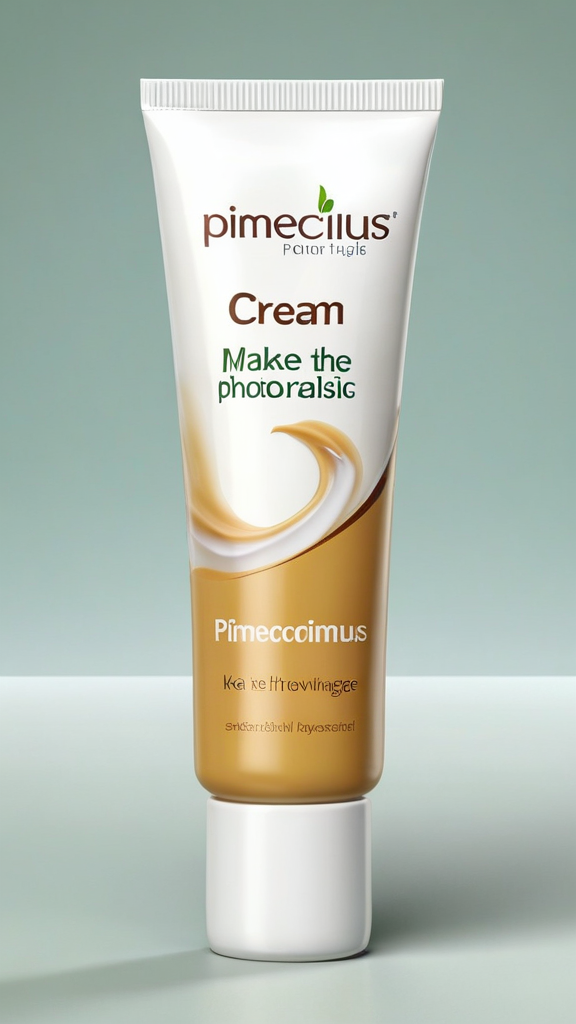The Best Fluffy Pancakes recipe you will fall in love with. Full of tips and tricks to help you make the best pancakes.

Pimecrolimus Cream
The Benefits and Uses of Pimecrolimus Cream for Eczema Treatment
Eczema, a common skin condition, can be both uncomfortable and distressing. People who suffer from it often seek relief to manage symptoms like itching, redness, and dryness. One effective treatment option for eczema is pimecrolimus cream. This medication has gained popularity for its ability to provide relief without some of the side effects associated with more traditional treatments, like steroids.
Pimecrolimus cream is an immunomodulator. This means it works by modifying the immune response in the skin. Instead of targeting the symptoms directly like most topical steroids, it helps to control the inflammation associated with eczema. This allows for a more balanced approach to treatment.
The cream is especially useful for individuals with mild to moderate eczema. It is applied directly to the affected areas of the skin, and you typically use it twice daily. The benefits of pimecrolimus cream are numerous and can greatly improve your quality of life if you struggle with eczema. Here are some key advantages:
- Reduced Inflammation: Pimecrolimus targets and decreases inflammation in the skin, helping to alleviate the redness and swelling that often accompany eczema flare-ups.
- Itch Relief: The cream effectively reduces the urge to scratch, which is crucial since scratching can worsen the condition and lead to infection.
- No Steroid Side Effects: Unlike topical steroids, which can cause skin thinning and dependency with long-term use, pimecrolimus cream does not have these drawbacks.
- Rapid Absorption: The cream is quickly absorbed by the skin, allowing you to apply it and go about your day without feeling greasy or weighed down.
- Well-Tolerated: Most users tolerate pimecrolimus cream well, with few experiencing side effects.
Using pimecrolimus cream often involves a specific application method. Here’s a brief guide:
- Clean the Area: Start by gently washing the affected skin to remove any dirt or irritants.
- Pat Dry: Lightly dry the area with a clean towel. Avoid rubbing to prevent further irritation.
- Apply the Cream: Use your fingertip to apply a thin layer of pimecrolimus cream to the affected areas. Ensure it’s evenly distributed.
- Wash Hands: After application, wash your hands to avoid accidentally spreading the cream to other areas or people.
When it comes to any medication, monitoring for side effects is important. While pimecrolimus cream is generally well tolerated, some individuals may experience mild burning or stinging upon first application. If these symptoms persist or if you notice any unusual skin changes, consult your healthcare provider for advice.
| Symptom | Frequency | Action |
|---|---|---|
| Mild Burning/Stinging | Common | Usually resolves quickly; consult a doctor if it persists. |
| Redness at Application Site | Occasional | Monitor; seek medical advice if it worsens. |
| Severe Irritation | Rare | Stop use immediately and consult a healthcare provider. |
One of the standout features of pimecrolimus cream is its versatility. It can be used in various situations – long-term management of chronic eczema or dealing with flare-ups. This flexibility makes it an invaluable tool in your skincare arsenal.
If you’re considering pimecrolimus cream, it’s important to discuss it with your healthcare provider. They can help determine if this treatment is appropriate for you and guide you on how to best integrate it into your overall eczema management plan.
Pimecrolimus cream stands out as a safe and effective option for managing eczema. With its unique mode of action, it provides relief from the discomfort of eczema without the risks associated with steroid treatments. If you or a loved one is grappling with this condition, exploring pimecrolimus cream could lead you towards a more comfortable and manageable experience.
Understanding the Side Effects and Precautions of Pimecrolimus Cream
Pimecrolimus cream is a topical medication that primarily treats eczema, also known as atopic dermatitis. While it’s known for its effectiveness in reducing inflammation and managing skin flare-ups, it is essential to understand the side effects and precautions associated with its use. Knowing what to expect can make your experience with this cream safer and more effective.
When using pimecrolimus cream, some side effects can occur. It is crucial to be aware of these to manage your treatment better:
- Localized Skin Reactions: The most common side effects include a burning sensation, redness, or itching at the application site. These reactions usually subside shortly after application but may be bothersome for some users.
- Skin Irritation: Some individuals may experience dry skin or an unusual rash. If the irritation becomes severe, it is wise to consult with your healthcare provider.
- Increased Skin Sensitivity: Pimecrolimus cream may make the skin more sensitive to sunlight. It is essential to protect the treated area from excessive sun exposure.
- Acne: Occasionally, the cream may cause acne flare-ups, particularly if the skin is prone to breakouts.
- Uncommon Allergic Reactions: Though rare, signs of an allergic reaction can include swelling, severe dizziness, or difficulty breathing. Seek immediate medical attention if you experience any of these symptoms.
With any medication, proper precautions are key. Here are some important considerations when using pimecrolimus cream:
- Follow Dosage Instructions: Always use the cream as prescribed by your healthcare provider. Applying more than directed does not improve results and can increase side effects.
- Avoid Infected Skin: Do not use pimecrolimus cream on skin that is infected or has open wounds, as this might worsen the infection.
- Keep Away from Sensitive Areas: Avoid applying the cream to sensitive areas such as the eyes, mouth, and mucous membranes.
- Use with Caution: If you have a history of skin infections or are taking other skin medications, discuss this with your doctor to ensure pimecrolimus is safe for you.
There are specific populations that require special attention when using pimecrolimus cream:
- Children: There is a risk of a more significant side effect profile in pediatric patients. Consult your child’s doctor for tailored advice.
- Pregnant or Breastfeeding Women: If you are pregnant or nursing, it’s vital to disclose this information to your healthcare provider. They will weigh the benefits against the potential risks for you and your child.
- Immunosuppressed Individuals: Those with weakened immune systems should proceed with caution, as there is a risk of increased skin infections.
Pimecrolimus cream is beneficial for many people managing eczema, but it’s essential to approach its use safely and responsibly. Observing the following tips can enhance your treatment experience:
- Patch Testing: If you are using pimecrolimus for the first time, consider applying a small amount to a small area to test for reactions.
- Combine with Moisturizers: Use alongside moisturizers to help hydrate the skin and improve overall results.
- Regular Follow-Up: Keep in touch with your healthcare provider to monitor progress and discuss any side effects that may arise.
Understanding the side effects and precautions of pimecrolimus cream helps you utilize it effectively while minimizing risks. Always consult your healthcare professional with any questions or concerns, ensuring a safer path to clearer skin.
Conclusion
When considering pimecrolimus cream as a treatment for eczema, it’s essential to weigh its benefits against potential side effects. This medication provides an effective option for managing the uncomfortable and often frustrating symptoms of eczema, offering relief to those struggling with this condition. The cream works by reducing inflammation and controlling the immune response, making it particularly useful for persistently affected areas. Its ability to manage flare-ups without the use of steroids is a significant advantage, as it minimizes the risk of skin thinning and other side effects commonly associated with long-term steroid use.
However, understanding the side effects and taking necessary precautions is equally important. Some users may experience skin irritation, burning, or itching at the application site, while others might face more serious but less common reactions. Always consult with a healthcare provider to ensure that pimecrolimus cream is suitable for your situation, especially if you have underlying health conditions or are pregnant or breastfeeding.
Ultimately, pimecrolimus cream offers a unique solution for eczema management when used correctly. Staying informed and following your doctor’s advice will maximize its benefits while minimizing the risks. With the right approach, this topical treatment can significantly improve your quality of life, helping you manage eczema effectively and confidently. If you are considering pimecrolimus cream, don’t hesitate to explore its potential with a healthcare professional to find out if it’s the right choice for you.

